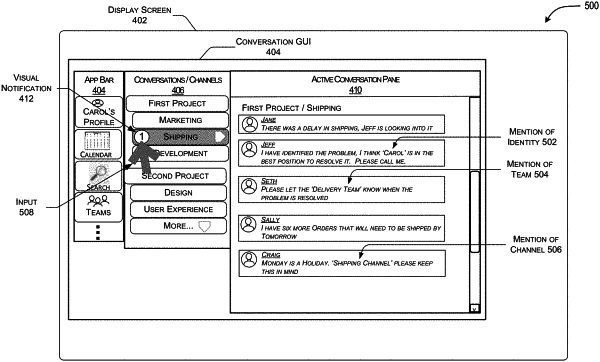| CPC G06F 3/0482 (2013.01) [G06F 40/279 (2020.01); G06Q 10/10 (2013.01); G06Q 50/01 (2013.01); H04L 51/08 (2013.01); H04L 51/216 (2022.05)] | 20 Claims |

|
1. A method comprising:
monitoring, by one or more processors, messages of a messaging thread;
determining, based at least in part on the monitoring and at a first time, whether a message posted to the messaging thread includes an occurrence of a call-out feature specifying a first user identification corresponding to a first user of the messaging thread and not a second user identification corresponding to a second user of the messaging thread;
receiving additional messages posted to the messaging thread subsequent to the message, the additional messages including a most recent message posted to the messaging thread;
receiving, in association with a second time that is after the first time and via an account associated with the first user identification, a request to view the messaging thread;
in response to receiving the request to view the messaging thread:
based on the message including the occurrence of the call-out feature, identifying a location of the message in the messaging thread to cause a computing device associated with the account to operate in a first mode that displays a first user interface arrangement including the message and not including the most recent message posted to the messaging thread; or
based on the message not including the occurrence of the call-out feature, causing the computing device associated with the account to operate in a second mode that displays a second user interface arrangement including at least some of the additional messages posted to the messaging thread subsequent to the message and not including the message.
|